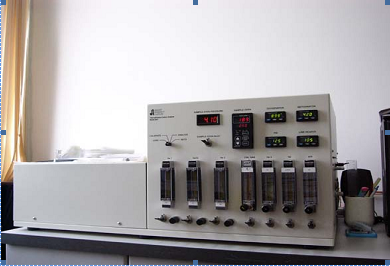Thermal optical carbon analyzer DRI Model 2001A OC/EC Carbon Analyzer
Working principle: heat release organic carbon, elemental carbon at different temperatures, and the carbon content of carbon (OPC) was separated by He-Ne laser. In the thermal furnace, under the environment of anaerobic pure helium temperature programmed, gradually heating particulate samples, volatile organic carbon in the sample, after access to 10% oxygen / helium mixture, under an aerobic atmosphere to heating, the samples of carbon oxidation decomposition released. Thermal furnace in the release of carbon in the oxidation furnace by MnO2 catalytic oxidation conversion to produce CO2, the CO2 in the reduction furnace is reduced to methane (CH4) and by flame ionization detector (FID) quantitative detection. In order to detect the amount of OPC, the He/Ne and nm laser irradiation samples were used to measure the change of the reflected light intensity (or transmitted light intensity) in the process of heating, and the initial light intensity was used as the reference to determine the separation points of OC and EC. IMPROVEA (Monitoring of Protected Visual Environments IMPROVEA) method, the TOC protocol is defined as OC1+OC2+OC3+OC4+OPC, the total carbon TEC is EC1+EC2+EC3-OPC, and the analysis is as follows:

Analytical mappingTest components: organic carbon and elemental carbon.
Analysis of samples, and requirements: Quartz texture filter paper collection of atmospheric, samples of dust and ice cores, sediment filtration samples; and does not require a pre-treatment, cut from the filter paper 1cm2 area into the instrument analysis, no sample analysis time of about 40 minutes.
Test precision, etc.: the instrument has a low detection limit and wide range of measurement, the minimum detection limit: total organic carbon (TOC) is 0.82 g /cm2g total elemental carbon (TEC) was 0.20 /cm2, the measurement range is 0.2-750 g /cm2

Photo thermal carbon analyzer